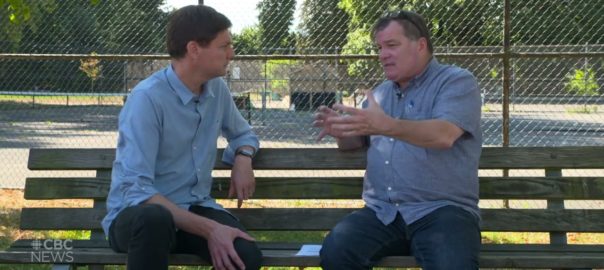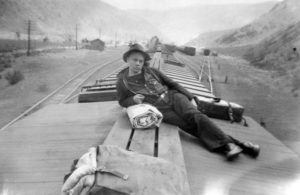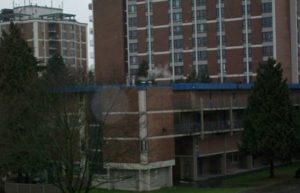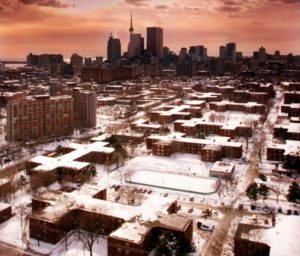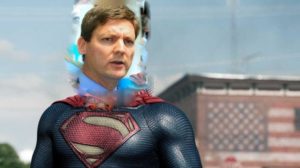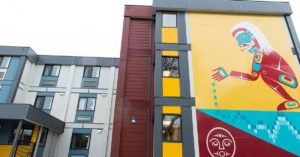
The buzz we’ll see created during the 45-day civic election season will occur at the various, and critically important, all-candidates meetings that will be held throughout September, leading up to Election Day, on Saturday, October 15th.
In 2018, the well-attended and phenomenally moving UBC Women’s Club of Vancouver all-women-candidates meeting was a key factor in getting City Councillor Rebecca Bligh elected to office. Ms. Bligh knocked us out with her knowledge of city governance, and the challenges faced by its citizens — of course, it didn’t hurt that Ms. Bligh’s gregarious partner, Laura, kibbitzed with us all night long (talk about someone having your number! … omigosh …).
Today’s VanRamblings will be given over to presenting the crucial all-candidate events you should put on your election calendar, sure to challenge your assumptions, and certain to inform, as entertainingly a good time as you’ll have over the course of the next 48 days, and critical to your understanding of the issues we all face in 2022’s crucially important Vancouver civic election.
2022’s Vancouver Civic Must-Attend Mayoral Debates

By far, the most important Mayoral debate to attend in September, will occur at the Britannia Community Centre, in cavernous Gym D, where in 2014 Vision Vancouver Councillor Andrea Reimer blew the rafters off the room — in a hostile room, too, consolidating that, whatever you thought of her — many, many were not fans — Andrea Reimer was a must-elect to Vancouver City Council.
Monday, September 19th’s must-attend Britannia Community Centre all-candidates Mayoral event will be moderated by the phenomenally inquisitive Kirk LaPointe, who was the Non-Partisan Association’s candidate for Mayor in 2014.

If there’s a more erudite and well-reasoned writer — and former political candidate for office — in Vancouver, we don’t know who that person might be. The Coalition of Vancouver Neighbourhoods folks who organized the all-candidates Mayoral event scored a coup in landing Mr. LaPointe as the night’s moderator.

As has long proved to be the case, and generally the best-attended of the Mayoral debates, takes place at the Christ Church Cathedral, on the northeast corner of Burrard and Georgia, with a seating capacity of only 600, the last Sunday of the election Mayoral debate is generally packed to the rafters, with more than 850 eager voters in attendance). No official notice of the event as yet, but you can be certain the event will occur.
Cathedral Mayoral Debate
Sunday, October 9th, 2022
1:30 p.m. — 3 p.m.
Christ Church Cathedral
650 Burrard Street, at Georgia

Civic Election All-Candidate Debates: Council, School & Park Board
Here we are on Tuesday, August 30th, 2022, and truth to tell it’s still a tad early for those who are organizing all-candidates debates / forums for our myriad City Council candidates seeking office in 2022, not to mention their civic body counterparts seeking to secure a position on the Vancouver School Board’s Board of Education, or a Park Board Commissioner’s position, sitting around the table at Vancouver’s Board of Parks and Recreation’s decision-making table, snuggled within that cherished environmental jewel, (Lord) Stanley Park.
Believe us when say, though, there’ll be debates & all-candidates events aplenty that will occur over the course of the next seven-plus weeks, as anxious politicos and pundits, not to mention Vancouver’s citizenry, await the outcome of the 2022 Vancouver civic election late in the evening of October 15th.

As we’d promised our friend Dulcy Anderson at Kitsilano’s Greek Days, way back in June, we would write to her about the seminal all-candidates events that constitute the two most important candidate events that occur for all candidates running for Vancouver City Council, and the one most important debate dedicated to championing women candidates seeking office in 2022.
Dulcy, we apologize for not apprising you of the following prior to this date — although arriving (more than) a bit late, it’s what we’d meant to write to you two months ago, which you’ll now finally find directly below …

Dulcy, each Vancouver municipal election, the good folks who are members of the Residents Association of Mount Pleasant sponsor a bangin‘ all candidates meeting for those who are seeking to become a Vancouver City Councillor. Although RAMP has not revealed the specific date for their 2022 Council all-candidates open forum, just wait a week or so, and all will be revealed to you.
What makes the RAMP all-candidates open forum a must-participate-in event?
- Held at the warmly inviting Heritage Hall, at 15th & Main, each election year, 25 Council candidates are asked to take a seat on the stage, while 400 or more engaged citizens pepper the candidates with questions;
- The RAMP forum is the most respectful of all the all-candidate forums held each civic election cycle, open to women and men, and representing the diverse multi-cultural mosaic that comprises the city we love. No cat calling, no acting out, no bad behaviour of any kind allowed— although in all the civic election years past we’ve attended, the audience has always conducted themselves responsibly, unlike the cretin who recently ambushed Canada’s Deputy Prime Minister;
- All the press in town turn up at the Residents Association of Mount Pleasant all-candidates forum, print, radio, television, independent journalists and muckrakers, bloggers, substackers and those who write what they feel on Medium. In this day and age, you want that coverage;.
Because it’s September, the evening the RAMP event takes place, the weather will be cooler, as will the temperature of the audience politely gathered inside Heritage Hall. The camaraderie of the 25 candidates on stage is something to behold, reflecting well on how our various engagements ideally should be.
Each Vancouver civic election cycle for decades, the University Women’s Club of Vancouver sponsors a well-attended women candidates forum, moderated in 2018 by VanRamblings’ friend, Lynne Kent — but as she was saying to us last week, at the TEAM … for a Livable Vancouver town hall, as the UBC organization transitions, in 2022 will be organized and moderated by a younger group of women members. Dulcy, you’ll to want to be a part of this event.
The 2018 University Women’s Club of Vancouver (video above) was a bumptious, informative and signal event in the previous Vancouver municipal election, the event providing women candidates seeking office a forum to discuss the issues of importance to all Vancouver voters, and most particularly to women voters and their lived experience. Women vote in exponentially higher numbers than men, in general women’s innate social conscience determining the candidates for whom they will cast their ballot.
In 2022, women candidates for City Council will save our city, and will work with integrity and élan towards a fairer and more just city for all of us.

Dulcy, because we’re aware you know & support City Councillor Christine Boyle — and given Ms. Boyle emerged the victor at the raucous 2018 Last Candidate Standing event (see video below) — we suggest you meet with Councillor Boyle to discuss her rewarding experience of Last Candidate Standing.
We’ll also suggest an out-of-the blue and phenomenally witty indie candidate for City Council in 2018, Elke Porter — she and her family are longtime Kitsilano residents — contact you, in order that she might discuss her experience of Last Candidate Standing, to provide you with further context and insight.







